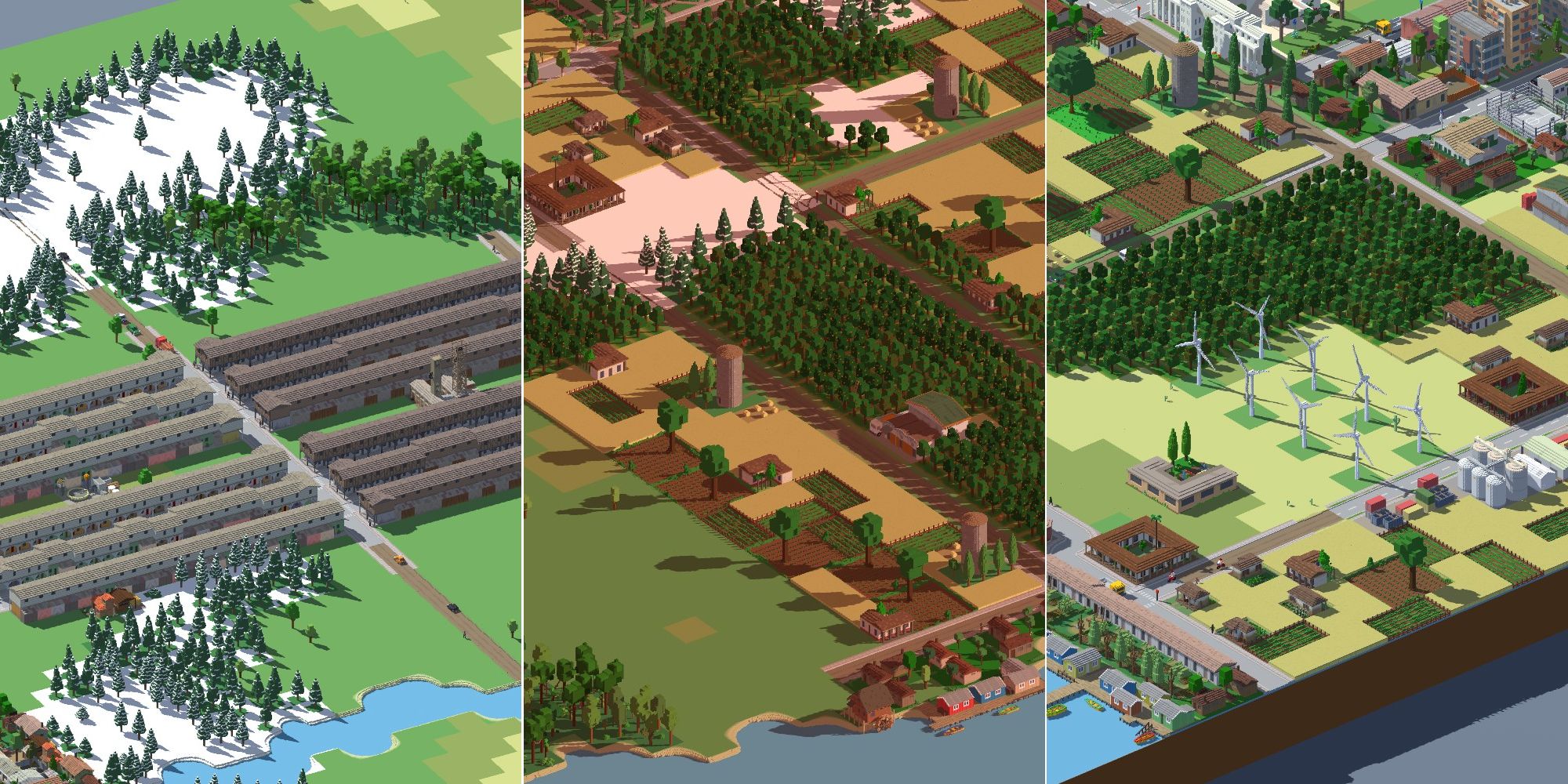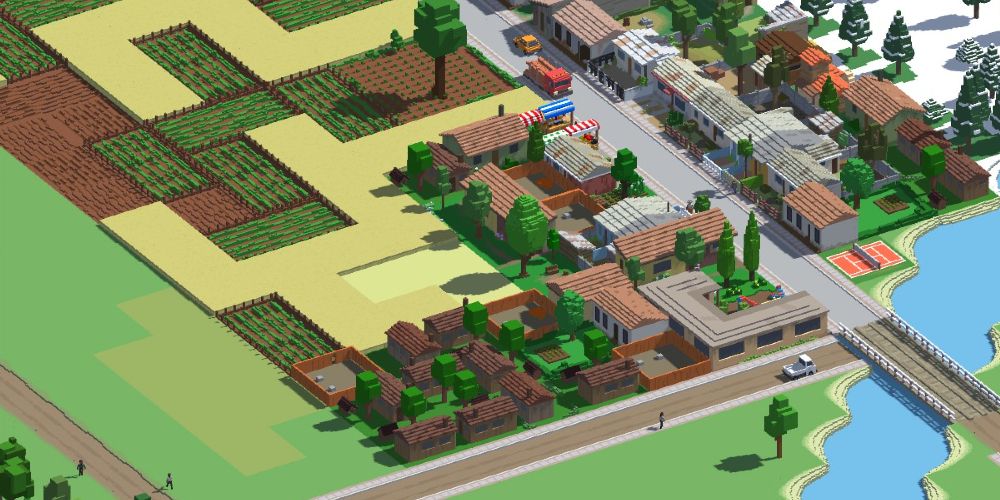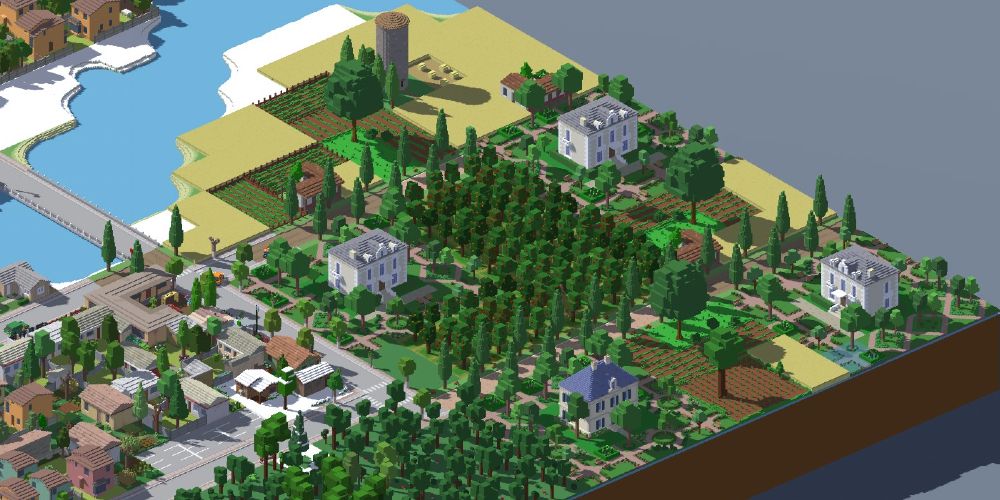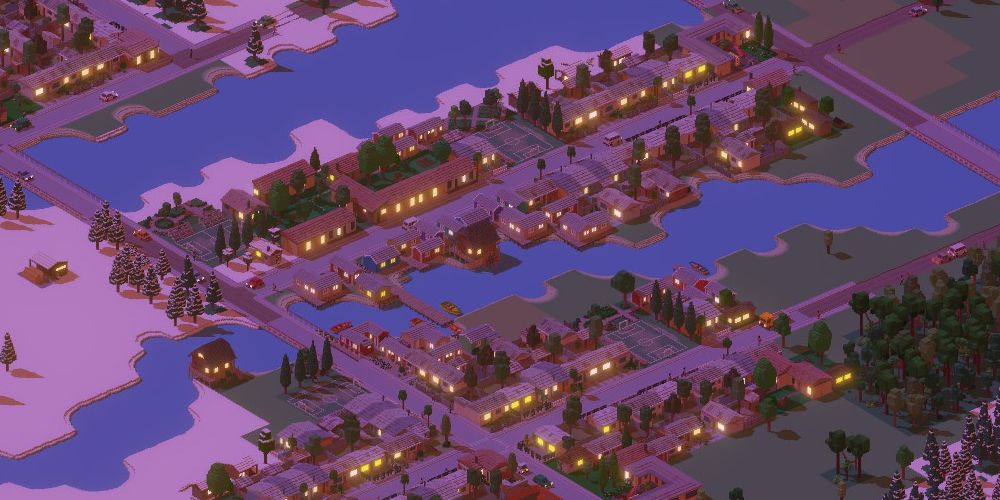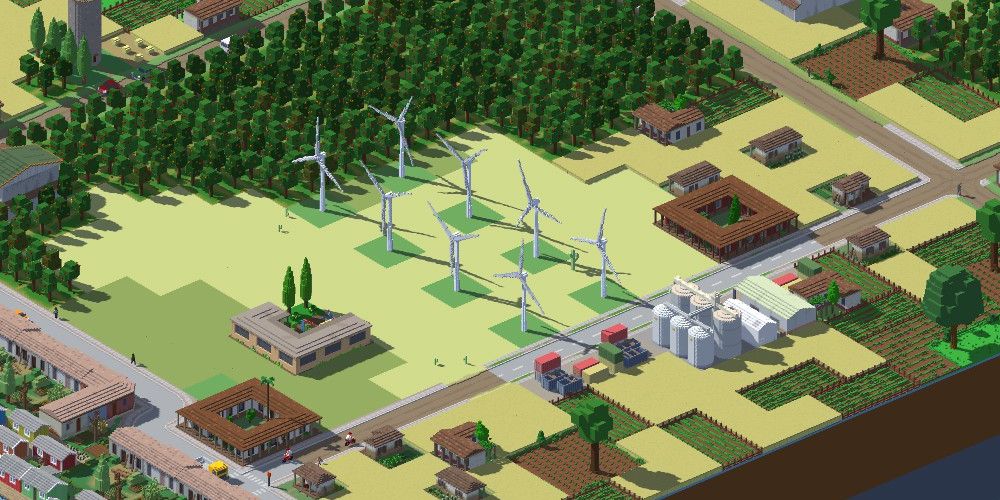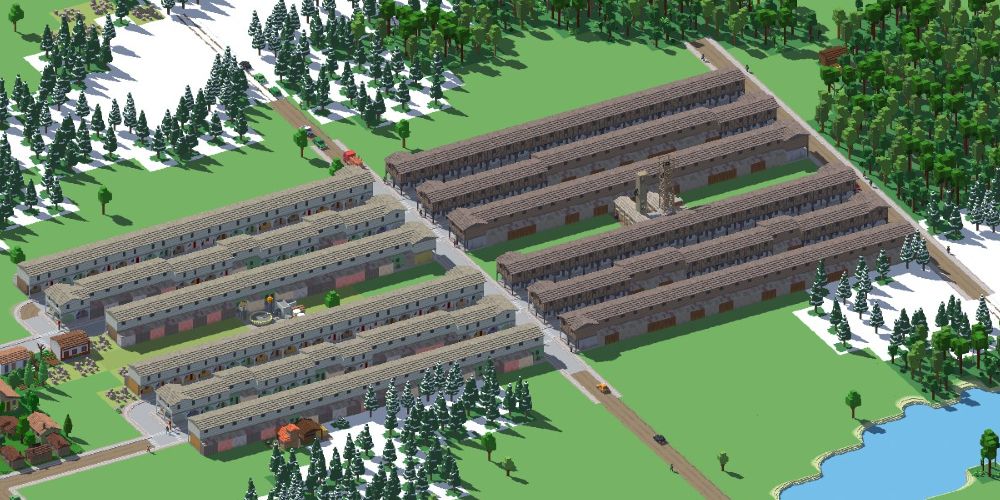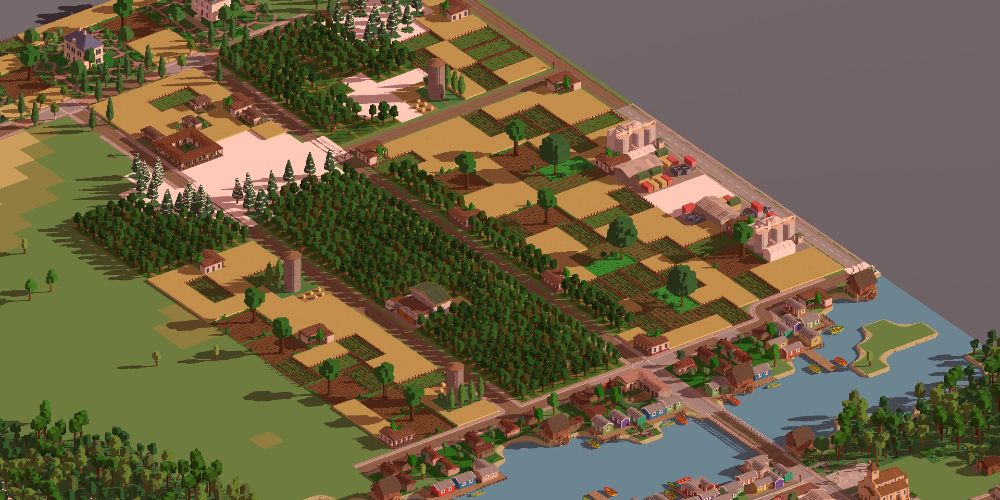Urbek City Builder requires precise placement compared to other city building games, and a single tile out of place can cause a chain reaction that alters an entire neighborhood. That's an extreme example, but the fact remains that a successful city needs to be thoughtfully laid out.
From small, self-sufficient neighborhoods to sprawling industrial centers, creating an efficient design for your city's districts is the primary challenge of Urbek. Try using some of the following layouts on your next map; they keep your growth and production steady while keeping unnecessary buildings from taking up space.
6 Farming Co-Op
Most buildings in Urbek need to have a road within three tiles in order to function. Some shops, like the Minimart and the Hardware Store, must be adjacent to a road. Farms and Orchards, however, can function from up to five tiles away.
Using this to your advantage, you can create an early-game setup where neighborhoods grow and sell their own food. Build blocks of housing three tiles deep along the road, then add two tiles' worth of farms behind them. This is a great way to transition from a farming district into a residential one, and it allows you to use a Local Market to provide food to the inhabitants - a much cheaper option than the Minimart.
If your farming co-op is next door to a full-fledged agricultural operation, put a Farm House right on the edge. With the Rural Schools policy, you can use the Farm House to provide basic education to the neighborhood without the space or resource requirements of a School.
5 Millionaires' Corner
The idle rich don't really contribute to your city in any meaningful way, especially considering the expense of getting them to move in. Nevertheless, some of the game's Paths require them as a victory condition, so you'll occasionally have to let them have their mansions.
Mansions upgrade from villas, which can't have any other residences within five tiles. Pick an otherwise-unused corner of the map and build the required four villas for the Path of Wealth, or the two you'll eventually need for the Path of Leisure. Set aside a 4x4 plot for each mansion - a central 2x2 for the house itself, and the surrounding tiles for the parks necessary to upgrade from a villa.
Don't fully surround the villas with parks until you've met the population and happiness requirements for the mansion upgrade. Villas only need a single adjacent park, and any more than that will just be a waste of resources if the building can't level up.
If you're building villas to start down the Path of Wealth, be extra careful not to build too many parks in total. Having twenty or more before the villas are done will set you down the Path of Leisure instead.
The extra space is best filled with farms and orchards to generate extra food for your city.
4 Fishing Village
Narrow straits like the one pictured above give you an opportunity to produce lots of food with a little space. Every house that's adjacent to water and within six tiles of a Dock becomes a Fisherman's House, producing both Food and Unskilled Work. If your map has a river that's narrow enough for a Dock to cover both banks, load it up with Fisherman's Houses to reap the benefits.
Fisherman's Houses will turn into Shanty Towns if exposed to any Pollution, This removes their ability to produce food, so keep your warehouses and factories away from the water!
If your map has a coast, try to build toward having Fisherman's Houses on every coastal tile. They never upgrade, so you don't need to worry about any further investment in the neighborhood, and you'll need the food they produce as your population grows.
3 Wind Farm
Once you unlock Wind Turbines and have a University built, you'll have a reasonably cheap and very efficient source of energy. They just need to be placed away from residential areas and with at least one space between each other, so if there's a patch of otherwise-unusable land on your map it's a perfect place to dot the landscape with turbines.
Best of all, Wind Turbines don't have any road requirements, allowing you to place them anywhere at all!
2 Mining Barracks
Mines require a large workforce to produce the industrial quantities of metal you'll need to grow your city. Every house that's built adjacent to a road and within five tiles of a mine will become a Miner's House producing the associated mine's resource. This means that your industrial neighborhoods will look much different from all the others.
Start by deciding where you want your mine. Coal Mines can be placed anywhere, but Iron Mines must have at least one tile of iron ore within five squares of their position. Run two parallel roads twelve tiles long on either side of the spot where you want the mine, with four tiles between them. Place the mine directly in the center, then build a strip of houses on either side of the roads. Add another road and another strip of houses to each side, and you'll have seventy-two homes ready to be occupied!
The two-tile gap in the middle can be used for warehouses, factories, and power plants. Miner's Houses aren't affected by pollution, so this is where you'll want to concentrate most of your industry. Remember to leave a space at each end for a food service building so that the barracks can level up once their upgrades are unlocked!
1 Agricultural District
Industrial farming can go a long way toward keeping your people fed, but the Pollution it creates and the space it requires can make it hard to zone for. If you're planning to construct Modern Grain Silos and Farm Sheds, it's best to do so at the edge of the map to minimize their impact. Spacing out your Farm Houses every six tiles lets you place a silo between each, with room for the warehouses necessary to upgrade them.
If the land you've designated for farming has small patches of infertile tiles like desert or snow, use those tiles for agricultural buildings. That way you're not losing any farm tiles and the otherwise-useless land becomes productive.
In the above screenshot, we've run a road along the edge of the map, allowing up to ten tiles of farmland between it and the next parallel road. Placing Farm Houses at the very edge allows orchards to be built on the other side of the road, far enough away from the warehouses to be unaffected by Pollution. Such a large block of orchards allows a Fruit Processor to be placed; in this case, a convenient 2x2 block of snow makes a perfect spot!

